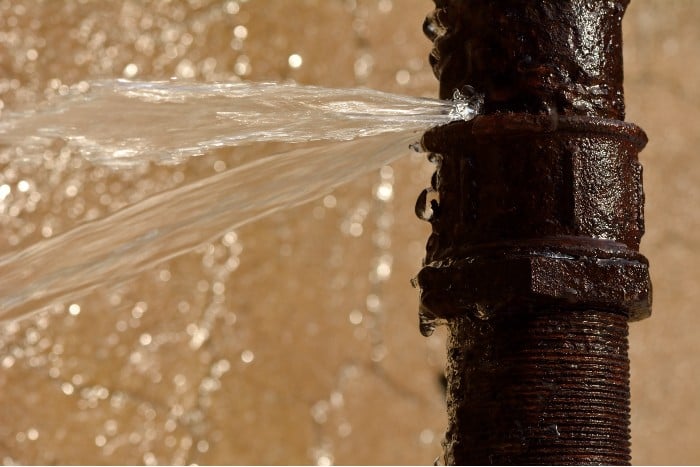Pinpoint Major Factors for Leak Issues Inside Your House
Pinpoint Major Factors for Leak Issues Inside Your House
Blog Article
Were you looking for advise on Common Water Leaks In House?

Leaks not only cause waste of water however can likewise create unnecessary damage to your home and promote unwanted organic growth. By looking and understanding for everyday situations that trigger leakages, you can safeguard your home from future leakages and unneeded damage.
Encroaching origins
A lot of water leakages begin outside the house rather than inside it. You could notice wet patches or sinkholes in your lawn, and that could suggest that tree origins are attacking water lines causing water to seep out.
Rusty water supply
As time passes by, your plumbing system ages and deterioration such as corrosion may begin eating away the pipes. This could be the root cause of discoloration or bending on your water pipes. This calls for an examination with your plumber quickly. Take into consideration changing the pipes given that they are at a greater danger of deterioration than the more recent models if our plumbing system is old.
Malfunctioning Pipeline Joints
The point at which your pipelines connect is regularly the weakest link in the waterline. Pipe joints can wear away in time, causing water leaks. The bulk of pipe joints are not easily noticeable. If you have loud pipelines that make ticking or banging sounds, specifically when the warm water is switched on, your pipe joints are probably under a lot of stress. It is suggested to have your plumber check your system yearly.
Immediate temperature level changes.
Severe temperature changes in our pipelines can create them to broaden and acquire all of a sudden. This development and also tightening may trigger cracks in the pipelines, particularly if the temperature are below freezing. It would certainly be best if you kept an eye on exactly how your plumbing works. The visibility of the formerly mentioned scenarios regularly shows a high threat.
Poor Water Connectors
Sometimes, a leakage can be triggered by loose hose pipes and pipes that provide your devices. More often than not, changing is what creates the loose water Connections. You might locate in the case of a washing equipment, a pipe may spring a leakage because of shaking during the spin cycle. In case of a water links leak, you might discover water running straight from the supply line or puddles around your devices.
Clogged Drains
Obstructed drains could be aggravating as well as inconveniencing, yet they can occasionally end up creating an overflow causing burst pipes. Maintain removing any kind of materials that may drop your drains that could block them to stay clear of such inconveniences.
All the above are root causes of leakages however not all water leaks result from plumbing leaks; some leaks might come from roof leakages. All leakages should be repaired immediately to stay clear of water damage.
Leakages not only create waste of water however can also trigger unnecessary damage to your home and promote undesirable organic development. By looking and also understanding for everyday circumstances that create leaks, you can safeguard your residence from future leakages as well as unneeded damages. Today, we will look at 6 leakage creates that may be causing your pipelines to drip.
At times, a leak can be triggered by loosened tubes and pipelines that supply your appliances. In instance of a water connections leakage, you may observe water running directly from the supply line or pools around your devices.
How To Check For Water Leak In Your Home
How To Check for Leaks
The average household's leaks can account for nearly 10,000 gallons of water wasted every year and ten percent of homes have leaks that waste 90 gallons or more per day. Common types of leaks found in the home are worn toilet flappers, dripping faucets, and other leaking valves. These types of leaks are often easy to fix, requiring only a few tools and hardware that can pay for themselves in water savings. Fixing easily corrected household water leaks can save homeowners about 10 percent on their water bills.
To check for leaks in your home, you first need to determine whether you're wasting water and then identify the source of the leak. Here are some tips for finding leaks:
Take a look at your water usage during a colder month, such as January or February. If a family of four exceeds 12,000 gallons per month, there are serious leaks.
Check your water meter before and after a two-hour period when no water is being used. If the meter changes at all, you probably have a leak.
Identify toilet leaks by placing a drop of food coloring in the toilet tank. If any color shows up in the bowl after 10 minutes, you have a leak. (Be sure to flush immediately after the experiment to avoid staining the tank.)
Examine faucet gaskets and pipe fittings for any water on the outside of the pipe to check for surface leaks.
Undetected water leaks can happen without the home or business owner even realizing. If you suspect a water leak, but not able to find the source. It is time to contact a professional water leak detection service, The Leak Doctor.
How To Find a Water Leak In Your Home
https://www.leakdoctor.com/blog/How-To-Check-For-Water-Leak-In-Your-Home_AE197.html

We had been made aware of that article on How to Find Water Leaks through an acquaintance on a different website. Sharing is caring. Who knows, you may be doing someone a favor. Many thanks for your time. Please stop by our blog back soon.
Call for expertise! Report this page